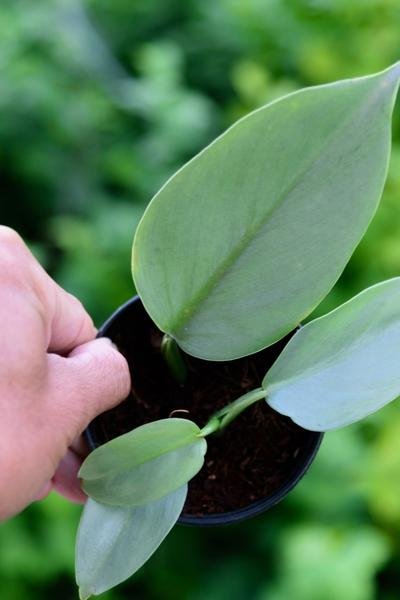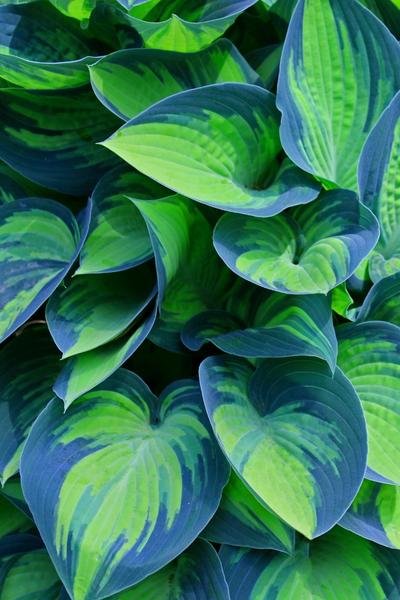Can you envision an ocean filled with violet algae or a forest full of blue leaves? It may be surprising to hear, but this is no longer science fiction. The blue house plants is certainly one of those unique plant species for household garden lovers which go beyond the fact that all plants should be green, as we are used to believe. This paper will provide an in-depth look at blue house plants, why they have blue leaves, how to keep them, and their distinct features differentiate from ordinary green plants.
Check out 14 Indoor Plants in Water Click here...
Why Do Some Leaves Have a Blue Coloration on Plants?
Let’s start with the intriguing question: Why do you have those white leaves? In this regard, we have to examine more about the begonia pavonina, also known as Peacock begonia. In fact, this special plant differs not only with colored blue leaves but also green leaves as well. However, researchers from the University of Bristol have revealed what gives the sea its blue color.
However, these begonias have changed such that they develop blue leaves for absorbing the photosynthetic light. Indeed, this adaptation is even more critical for begonia pavonina because it lives in the shade of trees in the Malaysian forest. Unlike other plants which utilize chloroplasts to capture light, this begonia takes it a notch higher. Its blue leaves are not made of random chlorophyll stacks but photonic crystals (a light-manipulating structure). Thus, begonia pavonina’s ability to assimilate an additional ten per cent of solar radiation on the dull ground is considered to be exceptional.
Check out 10 Seeds that Look Like a Brain Click here...
Blue House Plants
Having solved the puzzle of blue petioles, now it is time to look at some houseplants with this lovely feature. These are the standout blue house plants you can add to your indoor garden:
1. Blue Agave

An exciting undertaking is the growing of blue agave (Agave tequilana). It can grow up to five feet across, but there is no such thing as a free lunch. Avoid touching it with your hands because the leaves have thorns that might hurt you. Make the place where you keep your blue agave secure from children and pets. For safety purposes, trim the hard needle at the end. Blue agave has juice, and fleshy, leavy leaves covered with a smoky blue wax. Originating from Mexico, it grows well between an altitude of 3000-6,500 feet above sea level. Use a broad but shallow pot for indoor care, have plenty of light, good ventilation, moderating the watering process, and sandy well-drained soils. Rerpot your plant once in three years so that it will survive.
2. Silver Sword Philodendron

Philodendron hastatum is a plant species that has big shiny leaves tinged with silver and light blue in colour. This species is found naturally in tropical Rainforests that are from South and Central America. This plant has an average heights of fifteen to twenty inches when appropriately cared for. To make it appear as blue-silver, ensure it gets enough light during its growth. Soil will be able to get dry on its own and water can be applied once the top layer is completely dry. Get a potting mix that drains well but keeps the pH balanced (somewhere within 5.7 to 6.5). This will ensure that your silver sword philodendron is healthy. Click here For more detail’s.
3. Sedum Blue Pearl

The blue house plant that stands out due to its graceful beauty is none other than Sedum Blue Pearl. The plant with strongly smoking-blue foliage and pink inflorescence is known for attaining height not lower than 30 -40 cm. This is just what you need to add some sparkle into your indoor garden. Sedum, a member of the family Crassulaceae, is distributed throughout Mexico, Africa, Asia, North America, and Europe. The plants have pollinating abilities and hence attract other garden bees and insects.
4. Blue Hosta

The blue hostas fascinate with their very bright color – light blue or bluish-blue, and there are even some varieties that have an intriguing bluish-green variegation. They adapt well under different types of light conditions; however, they grow best in semi-shady to shade locations. They also have a special blue coating on their leaves that makes up for their aesthetic value as they can be used in your outdoor landscape as well as for indoor decor. Also, a big variety of blue hostas suppress weeds in the garden because of their large leaves.
5. Crassula Ovata ‘Blue Bird’

Compared to other Crassula varieties, Crassula Blue Bird’s leaves curl and have wavy edges. This plant is well renowned for its bold colors which include shades of blue, green , and red. It slowly becomes tall for about 50 cm. Those persons with taste of unique and spectacular indoor flowers should definitely have it on their list.
6. Cebu Blue Pothos

It is a type of Ceylon Blue Pothos which has the shape of leafs that is arrows and the color of Blue-Green with a metallic look. Young leaves are arrow shaped while mature leaves are big, blue green splitting, just like monstera. Achievement of the said leaf is unique and therefore requires warm temperatures and adequate sunlight.
For more 18 Indoor Plants With Blue Leaves Click here...
Check out Teddy Bear Plant : Comprehensive Care Guide Click here...
Blue House Plants Summary and FAQs
Blue Agave
- Container: Wide and shallow pot.
- Lighting: Abundant light, especially from the south.
- Fresh Air: Ensure good ventilation.
- Watering: Moderate; once a week in summer, every 25-30 days in winter.
- Soil: Sandy, well-draining, and preferably alkaline.
- Repotting: Every three years.
Silver Sword Philodendron
- Light: Adequate, with some direct sunlight.
- Watering: Let the soil dry between waterings.
- Soil: Well-draining, pH between 5.7 and 6.5.
- Height: Grows to 15-20 inches indoors.
Sedum Blue Pearl
- Size: 6-8 inches tall and 13-15 inches wide.
- Hardiness: Can withstand harsh winters.
- Family: Crassulaceae, with many species across the world.
Blue Hosta
- Light: Adaptable to various conditions.
- Growth: Suitable for shady areas.
- Benefits: Prevents weed growth, enhances outdoor and indoor spaces.
Crassula Ovata ‘Blue Bird’
- Appearance: Curly leaves with blue, green, and red shades.
- Growth: Slow growth, potential height of about 50 centimeters.
Cebu Blue Pothos
- Leaf Shape: Arrow-shaped, blue-green with a metallic sheen.
- Care: Requires warmth and ample light for unique leaf form.
Blue House Plants FAQs:
Q. Are blue house plants rare?
A. Blue house plants are relatively rare compared to green varieties, but they’re becoming more popular among indoor garden enthusiasts.
Q. Do blue house plants require special care?
A. While blue house plants don’t require drastically different care, they may have specific light, watering, and soil preferences. It’s essential to understand these preferences for each plant.
Q. Can I grow blue house plants in low light conditions?
A. Some blue house plants can tolerate low light conditions, but they will display their vibrant blue hues more prominently in brighter light.
Q. What is the significance of the blue color in these plants?
A. The blue color in these plants is a result of unique adaptations that help them absorb light more effectively for photosynthesis.
Q. Can I mix different blue house plants in the same container?
A. You can mix different blue house plants in the same container as long as their care requirements align. However, it’s crucial to consider their size and growth habits.
With this comprehensive guide to blue house plants, you’re now ready to embark on an exciting journey of adding these unique and enchanting plants to your indoor garden. Happy gardening!